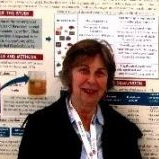Saffron (Crocus sativus, L.): Omics and Other Techniques in Authenticity, Quality and Bioactivity Studies
A special issue of Molecules (ISSN 1420-3049). This special issue belongs to the section "Natural Products Chemistry".
Deadline for manuscript submissions: closed (30 November 2015) | Viewed by 56659
Special Issue Editors
Interests: natural products' chemistry, bioactivity, and applications; olive tree products and byproducts; olive oil chemistry; analysis and quality; phytochemical analysis; nutrients and bioactive compounds; bioaccessibility and bioavailability; antioxidants as food preservatives; structure–antioxidant activity relationships
Special Issues, Collections and Topics in MDPI journals
Interests: isolation, purification, and structure determination of natural products using chromatographic and spectroscopic techniques; study of biological activity of natural products; instrumental methods of plants and food analysis; development of methods for quality determination, adulteration, and authenticity (botanical and geographical origin) of food
Special Issues, Collections and Topics in MDPI journals
Special Issue Information
Dear Colleagues,
In 2015 we are celebrating the 20th anniversary of our journal Molecules. To date the journal has published more than 7,000 papers and the journal website attracts 60,000 monthly visits and more than 200,000 monthly page-views. Thanks are due to our readers, innumerable authors, anonymous peer reviewers, editors, and all the people working in some way for the journal who have joined their efforts for years. Without your help, we would never have achieved this.
In honor of this anniversary, a special issue entitled “Saffron (Crocus sativus, L): Omics and Other Techniques in Authenticity, Quality and Bioactivity Studies” is planned, aiming at bringing together recent efforts and advances of researchers all over the world regarding hot topics such as authenticity control to combat fraud and mislabeling of this most precious spice, to safeguard consumers by addressing quality aspects including biological safety of spices, and, most importantly, to strengthen scientific evidence for bioavailability and bioactivity studies and relevant applications from the fields of pharmaceuticals, nutraceuticals, cosmeceuticals and medicine. Interest in the active apocarotenoids of this sterile triploid Crocus species seems to be a never ending story that started somewhere in the basin of the Mediterranean and southeast Asia and has been, throughout the centuries, a commercial product, in stigmatized styles, rich in sugar esters of crocetin, picrocrocin and particular volatiles, all of which have found multiple uses ranging from art to medicine and from food to religious practices. Today, the plant cultivation has expanded from east to west in the Northern Hemisphere and has also been transferred to the south, where it has also found friendly environments in which to thrive. Consumption of the spice is not only a local habit in production areas (e.g., Iran, India, Greece, and Spain), but is a global trend, mainly in rich countries (United Arab Emirates, Saudi Arabia, USA, northern European countries). Omics and other modern techniques can reveal more hidden information about this unique plant material, which, due to its properties and commercial price, is often named “the gold of the earth”. We kindly encourage all research groups covering various areas of the above topics to contribute to this Issue so that we achieve our aim of offering a comprehensive reference publication.
Prof. Dr. Maria Z. Tsimidou
Dr. Petros A. Tarantilis
Guest Editors
Manuscript Submission Information
Manuscripts should be submitted online at www.mdpi.com by registering and logging in to this website. Once you are registered, click here to go to the submission form. Manuscripts can be submitted until the deadline. All submissions that pass pre-check are peer-reviewed. Accepted papers will be published continuously in the journal (as soon as accepted) and will be listed together on the special issue website. Research articles, review articles as well as short communications are invited. For planned papers, a title and short abstract (about 100 words) can be sent to the Editorial Office for announcement on this website.
Submitted manuscripts should not have been published previously, nor be under consideration for publication elsewhere (except conference proceedings papers). All manuscripts are thoroughly refereed through a single-blind peer-review process. A guide for authors and other relevant information for submission of manuscripts is available on the Instructions for Authors page. Molecules is an international peer-reviewed open access semimonthly journal published by MDPI.
Please visit the Instructions for Authors page before submitting a manuscript. The Article Processing Charge (APC) for publication in this open access journal is 2700 CHF (Swiss Francs). Submitted papers should be well formatted and use good English. Authors may use MDPI's English editing service prior to publication or during author revisions.







